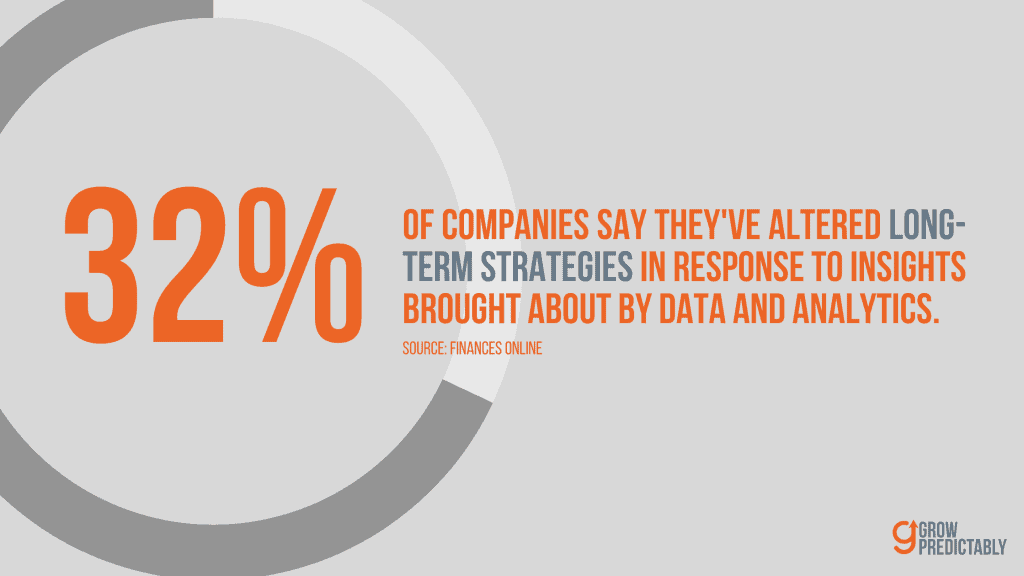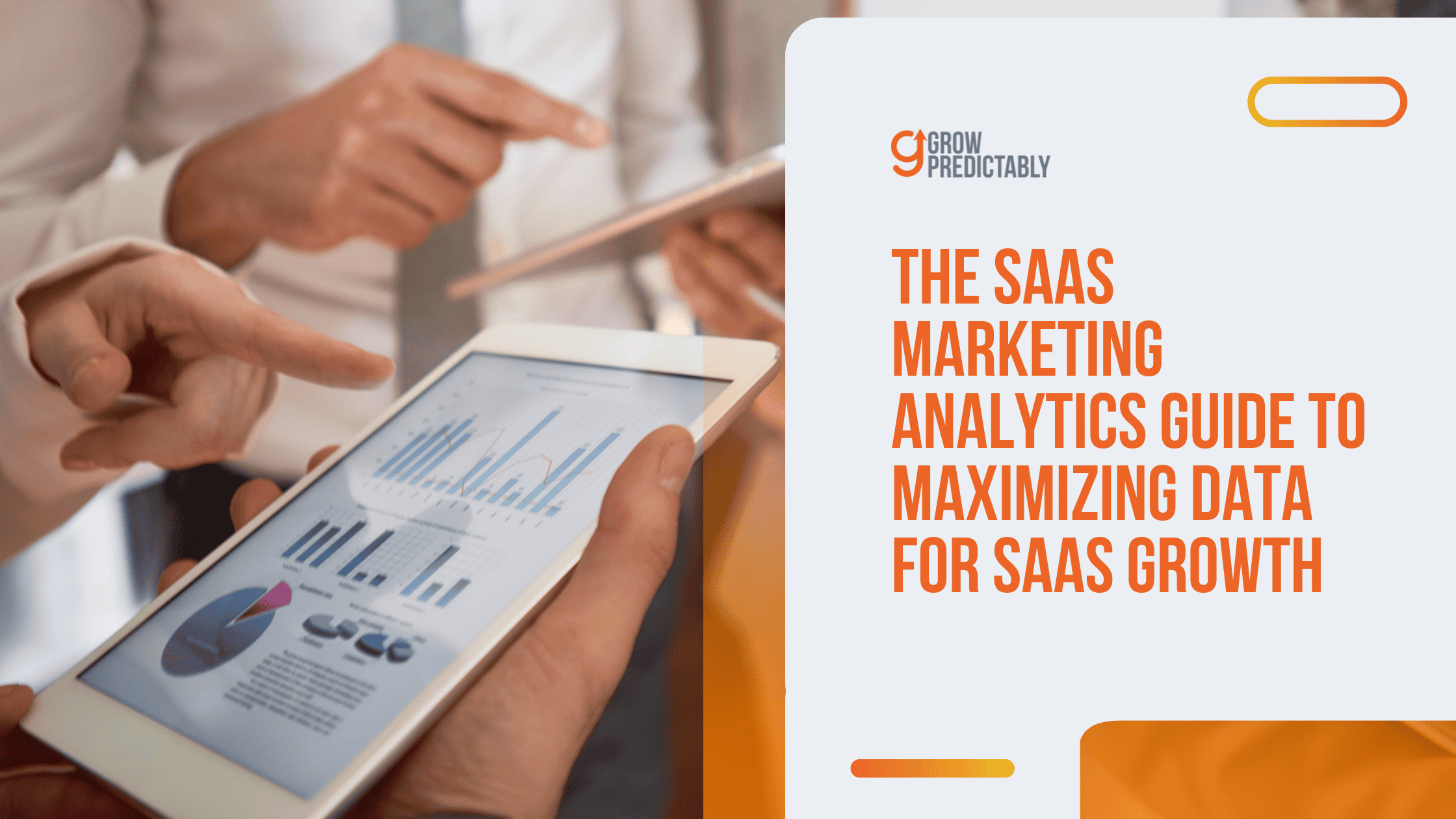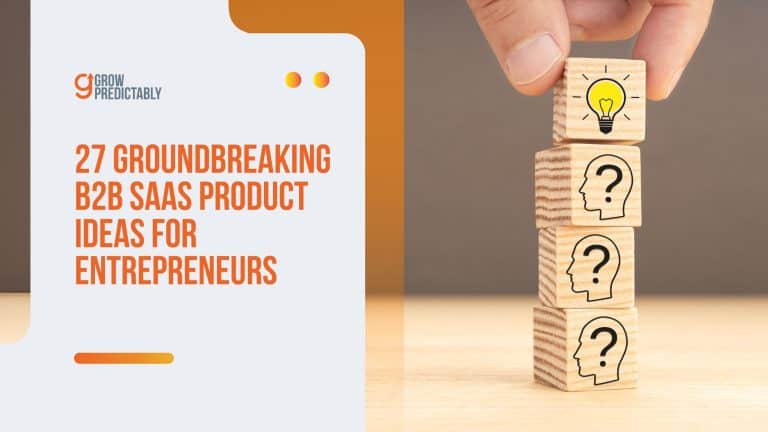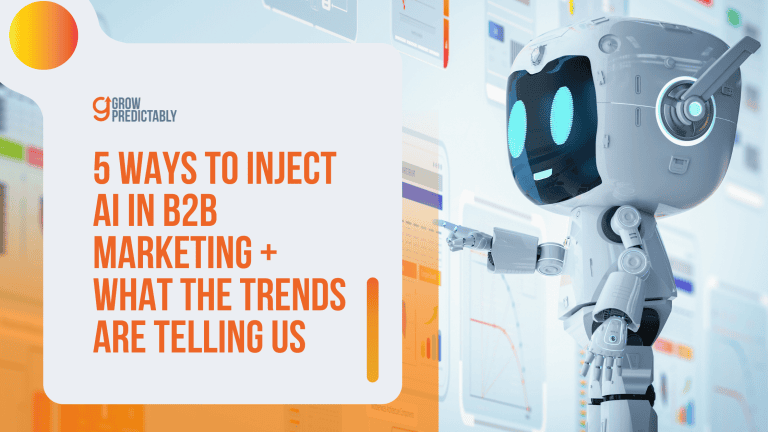The SaaS Marketing Analytics Guide to Maximizing Data for SaaS Growth
Frustrated by siloed data and ineffective marketing strategies?
Struggling to find reliable insights?
Many believe that simply having an analytics tool is enough. However, without proper integration and understanding, these tools are just data collectors.
Overcoming this obstacle means harnessing the full potential of your data, leading to better targeting, lower costs, and higher retention rates.
Dive into this blog and discover how marketing analytics can benefit your SaaS business, the flywheel that can help you maximize any type of marketing data, and the top metrics that SaaS businesses need to keep an eye on.
Without further ado, let’s dive straight into it.
- Marketing analytics helps you see how well your marketing efforts are working by tracking user behavior and campaign performance.
- By using marketing analytics, you can improve targeting strategies, focusing on customers most likely to buy your product.
- Analytics helps reduce customer acquisition costs by showing which channels bring in high-quality leads and which do not.
- Marketing analytics can enhance customer retention by tracking user behavior, helping you understand what keeps customers happy.
- Analytics can identify upselling opportunities by analyzing user behavior and preferences, helping you tailor offers that match customer needs.
What is SaaS Marketing Analytics?
Marketing analytics is the practice of measuring, managing, and analyzing data to understand marketing performance.
It’s all about using tools and techniques to see how well your marketing efforts are working.
For SaaS businesses, marketing analytics is crucial. Why? Because it helps you know what’s driving sign-ups and what isn’t.
You can track user behavior from the first click to become a paying customer.
This means you can see which campaigns are worth the investment.
By understanding the data, you make informed decisions. You don’t have to guess which strategies will work.
Instead, you use solid numbers to guide your choices. This leads to better targeting and more effective marketing.
Marketing analytics also shows you where to improve.
Maybe a landing page isn’t converting visitors into users. Analytics can pinpoint the problem so you can fix it.
In short, marketing analytics helps SaaS businesses grow smarter and faster. It turns data into insights, leading to better decisions and higher returns.
Who wouldn’t want that?
Now, let’s get clear on why analytics is so critical for your SaaS business—let’s talk benefits.
Top Benefits of SaaS Marketing Analytics
SaaS marketing analytics offers businesses valuable insights into customer behavior, campaign performance, and ROI tracking.
By leveraging cloud-based tools, companies can make data-driven decisions, optimize marketing strategies, and improve efficiency.

This transformative technology empowers organizations to drive growth and stay ahead in today’s competitive market landscape.
1. Enhance Targeting Strategies
Marketing analytics helps SaaS businesses improve targeting strategies by showing what works and what doesn’t.
It collects data on user behavior, like which ads they click on and which emails they open.
With this info, you can focus on the customers most likely to buy your product.
You can create personalized messages that speak directly to their needs.
In fact, one McKinsey study shows users of customer analytics are 23 times more likely to outperform their competitors in acquiring new customers. (Source)
This means higher engagement and better conversion rates.
Plus, you stop wasting money on campaigns that don’t deliver.
2. Reducing the Cost of Acquisition
Marketing analytics helps SaaS businesses cut customer acquisition costs by showing what really works.
It tracks which channels bring in high-quality leads and which ones don’t.
This means you can focus your budget on the best-performing strategies. You avoid spending money on ads or campaigns that don’t pay off.
Analytics also helps you refine your targeting. By understanding your audience better, you create more effective marketing messages. This leads to higher conversion rates.
Why spend more when you can get better results for less?
Marketing analytics gives you the insights you need to save money while gaining customers.
3. Enhancing Customer Experience and Retention
Marketing analytics helps SaaS businesses keep customers longer by showing what keeps them happy.
It tracks user behavior, like which features they use the most and when they start losing interest. This info lets you improve your product and offer better support.
By understanding your customers’ needs, you can create targeted campaigns that keep them engaged.
You can also identify at-risk customers and reach out with special offers or help.
Better customer retention means more stable revenue and less need to find new clients.
For better customer experience and retention, utilize the Customer Value Journey. The CVJ enhances customer experience and retention by guiding customers through eight stages.
The main goal of the CVJ is to turn potential customers into loyal advocates by providing value at each step.
By ensuring a smooth and engaging journey, you build stronger relationships, leading to better satisfaction and higher retention.
4. Identifying Upselling Opportunities
Marketing analytics helps SaaS businesses spot upselling opportunities by analyzing user behavior and preferences.
It shows which features or add-ons your customers use most. If a customer frequently uses a basic feature, they might be ready for a premium version.
Analytics can also identify patterns in high-value customers.
This info helps you tailor offers that match their needs. You can send targeted messages about upgrades or new services that fit their usage.
By understanding what customers want, you can offer them better solutions.
This boosts your revenue and keeps customers satisfied.
If you’re sold with all the pros of SaaS marketing analytics, the next step is to get to know the important metrics.
Here, we have three!
3 Key Metrics in SaaS Marketing Analytics
Understanding key metrics in SaaS marketing analytics is crucial for tracking performance and making informed decisions.
From customer acquisition cost to churn rate, these metrics provide valuable insights for optimizing strategies and driving growth.
Here are the top three of those metrics, including their formulas, for you to regularly monitor:
1. Conversion Rate
Conversion rate measures the percentage of visitors who complete a desired action (such as making a purchase or signing up for a newsletter).
This metric helps you understand the effectiveness of your acquisition strategies in turning visitors into customers.
Formula:
Conversion Rate = ( Number of Conversions / Total Number of Visitors ) x 100
Example:
= ( 50 / 1000 ) x 100
= 0.5 x 100
Conversion Rate = 5%
2. Return on Investment (ROI)
ROI measures the profitability of your marketing campaigns.
It helps you assess the financial return you get for your marketing spend, indicating which campaigns are most effective in generating revenue.
Formula:
ROI = ( Revenue from Campaign – Campaign Cost / Campaign Cost ) x 100
Example:
= ( 10000 – 2000 / 2000 ) x 100
= ( 8000 / 2000 ) x 100
= ( 4 ) x 100
ROI = 400%
3. Customer Lifetime Value (CLV)
CLV predicts the total revenue a business can expect from a single customer account throughout their relationship.
This metric helps you understand the long-term value of different customer segments, allowing you to tailor your personalization and retention strategies effectively.
Formula:
CLV = ( Average Purchase Value x Average Purchase Frequency ) x Customer Lifespan
Example:
= ( 100 x 4 ) x 5
= ( 400 ) x 5
CLV = 2000
These metrics give you a clear view of how well your marketing is doing, helping you decide what to do next to get more customers, make your campaigns work better, and keep people interested.
Now that you have the formulas, the question now is:
“How can you use data to make better marketing decisions?”
How to Strategically Use Analytics to Make Data-Driven Decisions & Level Up Your Marketing & Advertising Efforts?

Using digital analytics to level up your marketing and advertising campaigns is not a 1-2-done type of task.
If you genuinely want to achieve outstanding results with the digital data from your SaaS marketing campaigns, using The Measure to Optimize Flywheel can be your step-by-step guide.
To begin, follow the five steps listed below:
- Set Measurable Goals
- Measure
- Report
- Extract Insights
- Optimize
Let’s touch down on each of these steps one by one.
1. Set Measurable Goals
Businesses and marketers that set quarterly goals and objectives are 376% more successful than the ones that don’t.
If anything, a SaaS marketer must know that setting measurable goals is never to be overlooked in digital marketing.
Running a SaaS business without setting goals and objectives is like driving a car with your blindfolds. It’s all too risky!
Of the long list of benefits of goal setting, a few include:
- Provides direction and focus.
- Provides a better understanding of expectations.
- Gives clarity.
- Helps make powerful decisions.
- Helps clear a measurable roadmap to success.
- And more!
While some may be short-term goals and others may be long-term, the trick here is to break down these goals into objectives, which should further be broken down into measurable KPIs.
Key Performance Indicators, commonly referred to as KPIs, are critical indicators set by businesses to demonstrate how effective they are in achieving their key business objectives.
For example, if your goal is to increase the efficiency of your marketing department, then you can break down these goals into:
- Boost conversion rate
- Optimize cost per lead
Now, a good example of turning these goals into measurable KPIs is:
- Boost conversion rate by 2% in this quarter.
- Bring the cost per lead down by 5% in this quarter.
- Increase organic website traffic by 10% this year.
While writing KPIs, we’d advise you to cover both:
- Lagging KPIs – Lagging KPIs look back at whether the intended outcomes were achieved. These include – gross margin, growth in annual sales, annual net income, and more.
- Leading KPIs – Leading KPIs look forward to future events and outcomes. These include a number of new website trials, a number of unique website views, and more.
2. Measure
You must write down your KPIs depending on your goals, objectives, marketing, and advertising campaigns.
Ensure that everyone within your SaaS business can clearly understand the KPIs – which will help them steer the business’s digital marketing in the right direction.
But writing down your KPIs is only the first step in digital analytics!
Even though you know the key performance indicators you’d like to track, like your customer retention rate or repeat purchase rate, you need to have a plan to measure them.

When you log in to your Google Analytics, Facebook Analytics dashboard, or other dashboards within other social media channels, you often find yourself in front of a swarm of metrics.
This is normal regarding data integration but can also be overwhelming for some.
To avoid getting bogged down, prepare a strategic plan with the right metrics and KPIs side by side.
This will help you streamline the reporting process and make it easier for literally anyone within the organization to gain actionable insights into your marketing and advertising campaign’s performance.
3. Report
As mentioned above, working around getting overwhelmed with data is important. To do that, only pay attention to the ones that’ll help you track your KPIs.
Analytics is the process of putting systems into analyzing data or statistics.
Choosing which ones to pay attention to and which to set aside is your first step to systematizing your data.
You simply can’t track them all. One famous quote has this to say:
“If you don’t track any metrics, you’re flying blind. But if you collect and focus on too many, they may end up obstructing your field of view.”
Scott M. Graffius
Rather than going down the long road, I’d advise you to take the smart route that’ll help you save valuable time and effort.
Upon logging in to the dashboard, keep your KPI tracking plan handy.
This will help you or everyone in your team catch the right metrics and build an easy-and-simple report that anyone can use.
Nothing productive can be taken out of digital analytics without reporting.
That’s why everyone involved must make this phase as simple and basic as possible.
4. Extract Insights
Did you know that over 68% of teams have difficulty extracting data insights required to make strategic decisions?
This is a serious issue for businesses today—and the reason why leveraging digital analytics tools is a must.
Raw data is completely useless unless you transform it into insights.
From optimizing your operations to improving customer experience, insights can help you make better decisions and harness the complete potential of digital analytics.
Let’s say one of your goals was to boost your conversion rate by 5% this quarter.
If you fall short, look into the elements that contributed to you not reaching that goal.
That’s why it’s advisable to set both lagging & leading KPIs.
Doing so will help you dive deeper into the past and look at the upcoming trends and patterns.
Setting KPIs increases productivity and helps everyone redirect their actions when necessary.

Using the same example, if you couldn’t boost your SaaS website’s conversion rate, maybe the problem is with your company’s website.
If the problem is with the company’s website, you may need to look at your web analytics and extract relevant insights.
From tracking your website traffic to your buyers’ customer journeys to lead generation, you need to track the right metrics to determine the root of the problem.
Once you do this, you’ll be able to make informed decisions, which will help you understand which areas you need to focus on.
5. Optimize
After you extract insights, you’ll have better clarity about which areas need optimization the most.
For example, if you weren’t able to reach the quarter’s goal web conversion boost and, upon extracting insights, found out that your website visitors are bouncing off after heading over to your “Our Services” page, now you know what aspect of the site needs more work.
Another example: let’s say you’re running Facebook ads and can’t get decent traffic to your website.
Maybe the problem is with your creatives, or maybe you couldn’t establish a solid brief of your target audience.
In those cases, you need to track the extracted insights and understand the root of the problem.
Once you’ve identified the problem, it’s time to optimize your campaign(s) or overall digital strategy.
Apply, test, and measure different strategies and try to find out which one helps you get closer to your KPIs. This will help you understand what’s working for you and what’s not.
Aside from The Measure to Optimize Flywheel, you can leverage more techniques for SaaS marketing analytics.
Advanced Techniques in SaaS Marketing Analytics
In the lively world of SaaS marketing analytics, it’s key to master advanced techniques to stay ahead.
This guide dives deep into cutting-edge strategies, data interpretation methods, and predictive analytics to empower SaaS marketers with the insights they need for growth and success.
1. Predictive Analytics and Modeling
Predictive analytics and modeling use data to forecast future marketing outcomes.
By analyzing past trends, you can predict customer behavior, campaign success, and even churn rates.
This helps SaaS businesses allocate resources wisely and plan effective strategies.
Imagine knowing which users are likely to upgrade or leave. You can act before it’s too late.
2. Real-Time Analytics
Real-time analytics offers instant insights into your marketing efforts. You see how campaigns perform as they happen.
This allows for quick adjustments, improving engagement and ROI.
The benefits? Faster decision-making and better customer experiences.
However, implementing real-time analytics comes with challenges.
It requires significant investment in technology and skilled personnel. Plus, managing vast amounts of data in real-time can be complex.
3. Integration with Other Business Functions
Integrating analytics with sales, support, and other departments is vital.
When all teams have access to the same data, they work more effectively.
For sales, analytics provides leads with a higher chance of conversion.
For support, it identifies common issues, allowing proactive solutions. Marketing analytics also helps product teams understand which features users love or ignore.
To integrate analytics, start by ensuring all departments use the same tools and platforms.
Regularly share insights through dashboards and meetings. Encourage collaboration by setting shared goals based on data.
In summary, advanced techniques in SaaS marketing analytics—predictive analytics, real-time analytics, and integration—offer immense value.
They help forecast outcomes, improve responsiveness, and create a cohesive strategy across departments.
FAQs
Key Takeaways
SaaS marketing analytics is a powerful tool for transforming how businesses measure, manage, and optimize their marketing efforts.
By leveraging data, SaaS companies can make informed decisions, enhance targeting strategies, reduce acquisition costs, and improve customer retention and upselling opportunities.
These insights lead to smarter marketing, higher returns, and sustained growth.
Implementing the core principles of SaaS marketing analytics will enable your business to stay ahead of the competition and maximize your marketing ROI.
Embrace data-driven decision-making to unlock your company’s full potential.
Ready to take your marketing to the next level?
Explore our other blogs on digital marketing, business strategies, and mindset to gain more valuable insights and tips for success.








